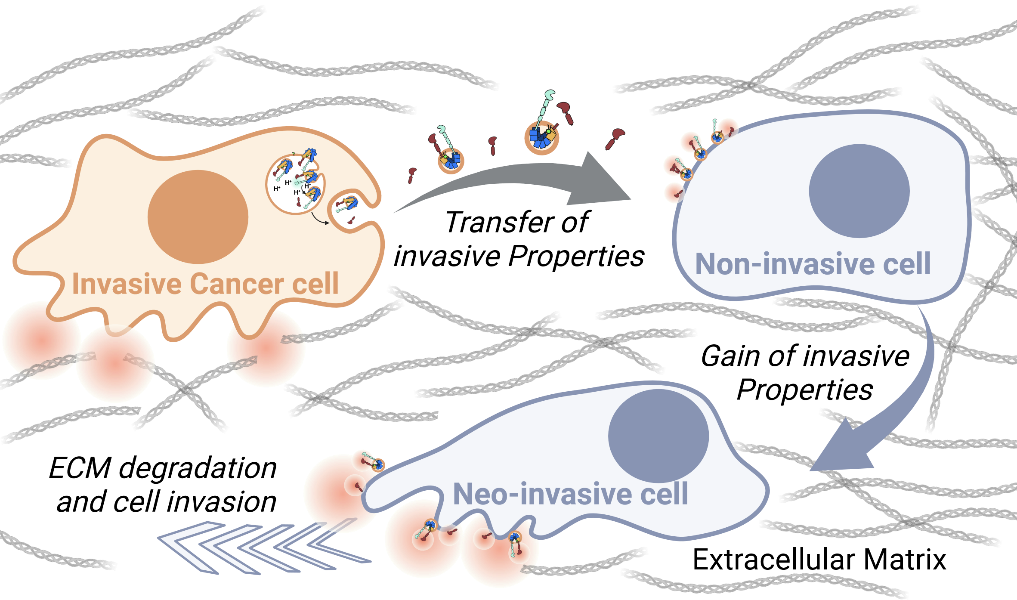Nature Communications article from Raiborg project group: Cancer cells transfer their invasive properties to non-invasive cells

First author
Cancer cells degrade and invade their surrounding tissue by use of the enzyme MT1-MMP, which is expressed on their cell surface. In a new article published in Nature Communications on February 10, 2024, Eva Wenzel and her co-workers in Camilla Raiborg’s project group identify a new mechanism for cancer cell invasion, namely that cancer cells can transfer their invasive properties to non-invasive cells. They show how invasive cancer cells secrete catalytically active soluble forms of MT1-MMP, which dock on the surface of other cells. This enables non-invasive recipient cells to degrade and invade into the extracellular matrix, by use of the newly acquired MT1-MMP enzyme.
The authors find that this phenomenon depends on intricate mechanisms in the donor- and recipient cells. High expression of MT1-MMP in tumours is associated with poor prognosis. This study gives a significant contribution to our understanding of cancer cell dissemination and the role of MT1-MMP in cancer progression.

Model for intercellular transfer of invasiveness.
Links:
The Nature Communications article:
Intercellular transfer of cancer cell invasiveness via endosome-mediated protease shedding
Eva Maria Wenzel, Nina Marie Pedersen, Liv Anker Elfmark, Ling Wang, Ingrid Kjos, Espen Stang, Lene Malerød, Andreas Brech, Harald Stenmark & Camilla Raiborg
Nature Communications volume 15, Article number: 1277 (2024)
Camilla Raiborg's project group:
Protein dynamics in tumor suppressor pathways
Camilla Raiborg: publications and more information
